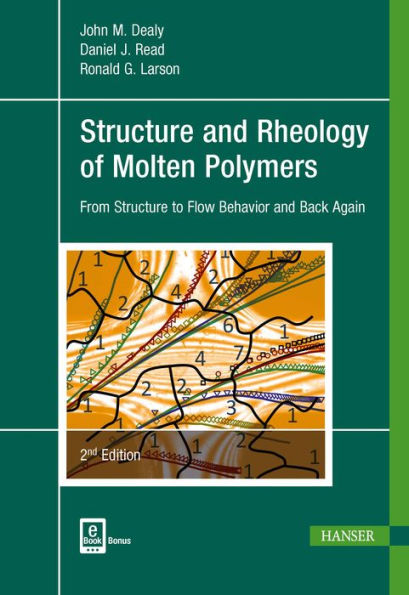Recent advances in polymer science have made it possible to relate quantitatively molecular structure to rheological behavior. At the same time, new methods of synthesis and characterization allow the preparation and structural verification of samples having a range of branched polymeric structures. This book unites this knowledge to enable production of polymers with prescribed processability and end-product properties. Methods of polymer synthesis and characterization are described, starting from fundamentals. The foundations of linear viscoelasticity are introduced, and then the linear behavior of entangled polymers is described in detail. This is followed by a discussion of the molecular modeling of linear behavior. Tube models for both linear and branched polymers are presented. The final two chapters deal with nonlinear rheological behavior and tube models to describe nonlinearity. In this second edition, each chapter has been significantly rewritten to account for recent advances in experimental methods and theoretical modeling. It includes new and updated material on developments in polymer synthesis and characterization, computational algorithms for linear and nonlinear rheology prediction, measurement of nonlinear viscoelasticity, entanglement detection algorithms in molecular dynamics, nonlinear constitutive equations, and instabilities.
1142672931
Structure and Rheology of Molten Polymers 2E: From Structure to Flow Behavior and Back Again
Recent advances in polymer science have made it possible to relate quantitatively molecular structure to rheological behavior. At the same time, new methods of synthesis and characterization allow the preparation and structural verification of samples having a range of branched polymeric structures. This book unites this knowledge to enable production of polymers with prescribed processability and end-product properties. Methods of polymer synthesis and characterization are described, starting from fundamentals. The foundations of linear viscoelasticity are introduced, and then the linear behavior of entangled polymers is described in detail. This is followed by a discussion of the molecular modeling of linear behavior. Tube models for both linear and branched polymers are presented. The final two chapters deal with nonlinear rheological behavior and tube models to describe nonlinearity. In this second edition, each chapter has been significantly rewritten to account for recent advances in experimental methods and theoretical modeling. It includes new and updated material on developments in polymer synthesis and characterization, computational algorithms for linear and nonlinear rheology prediction, measurement of nonlinear viscoelasticity, entanglement detection algorithms in molecular dynamics, nonlinear constitutive equations, and instabilities.
209.99
In Stock
5
1

Structure and Rheology of Molten Polymers 2E: From Structure to Flow Behavior and Back Again
610
Structure and Rheology of Molten Polymers 2E: From Structure to Flow Behavior and Back Again
610eBook
$209.99
$279.99
Save 25%
Current price is $209.99, Original price is $279.99. You Save 25%.
Related collections and offers
209.99
In Stock

Product Details
| ISBN-13: | 9781569906125 |
|---|---|
| Publisher: | Hanser Publications |
| Publication date: | 01/05/2018 |
| Sold by: | Barnes & Noble |
| Format: | eBook |
| Pages: | 610 |
| File size: | 15 MB |
| Note: | This product may take a few minutes to download. |
| Age Range: | 18 Years |
About the Author
From the B&N Reads Blog
